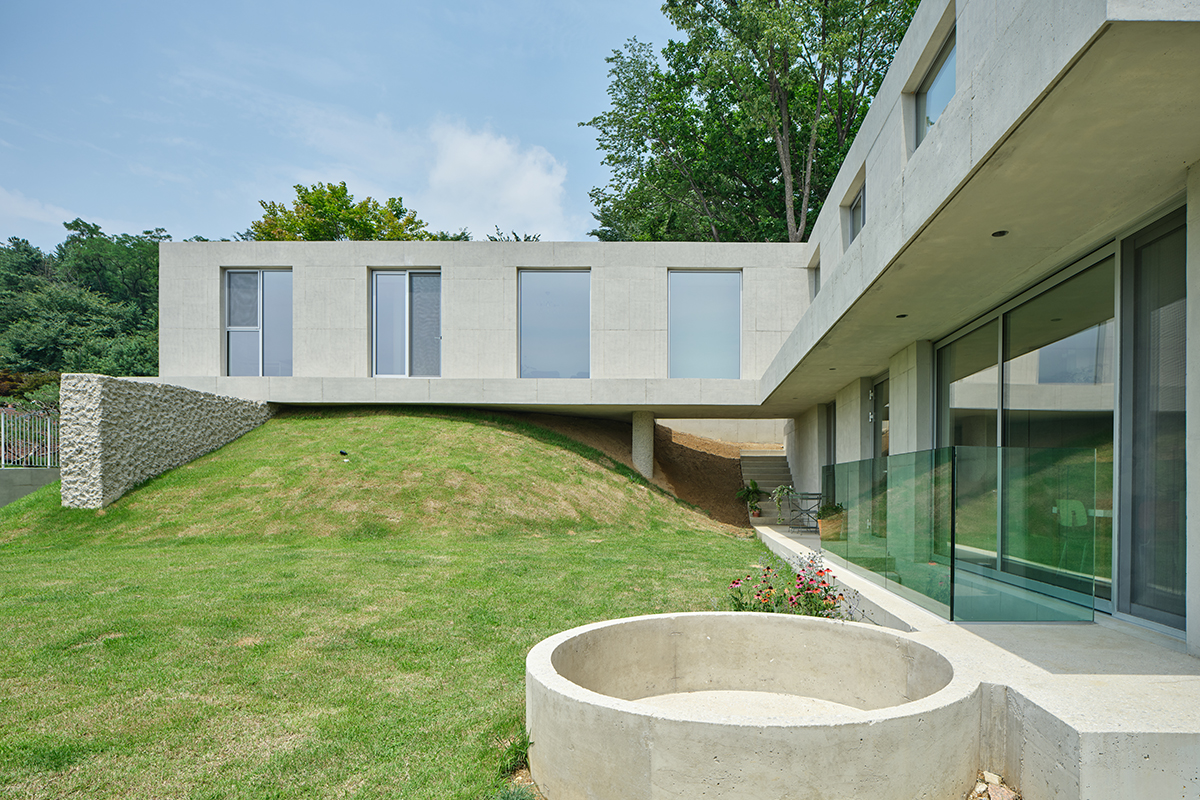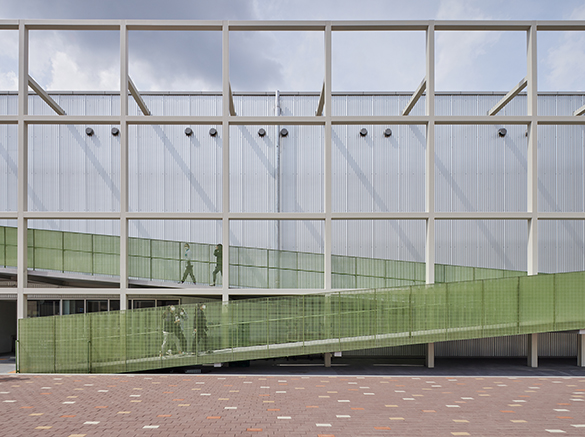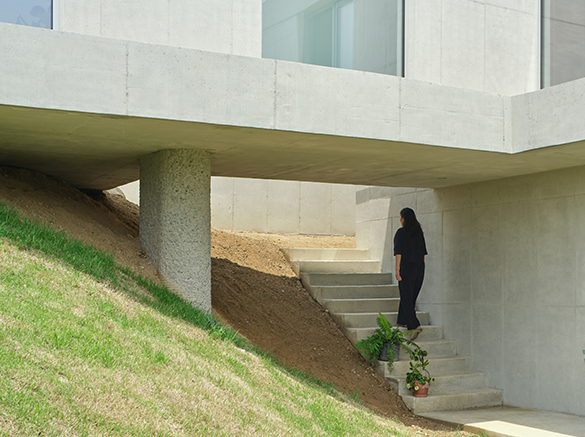SPACE September 2023 (No. 670)
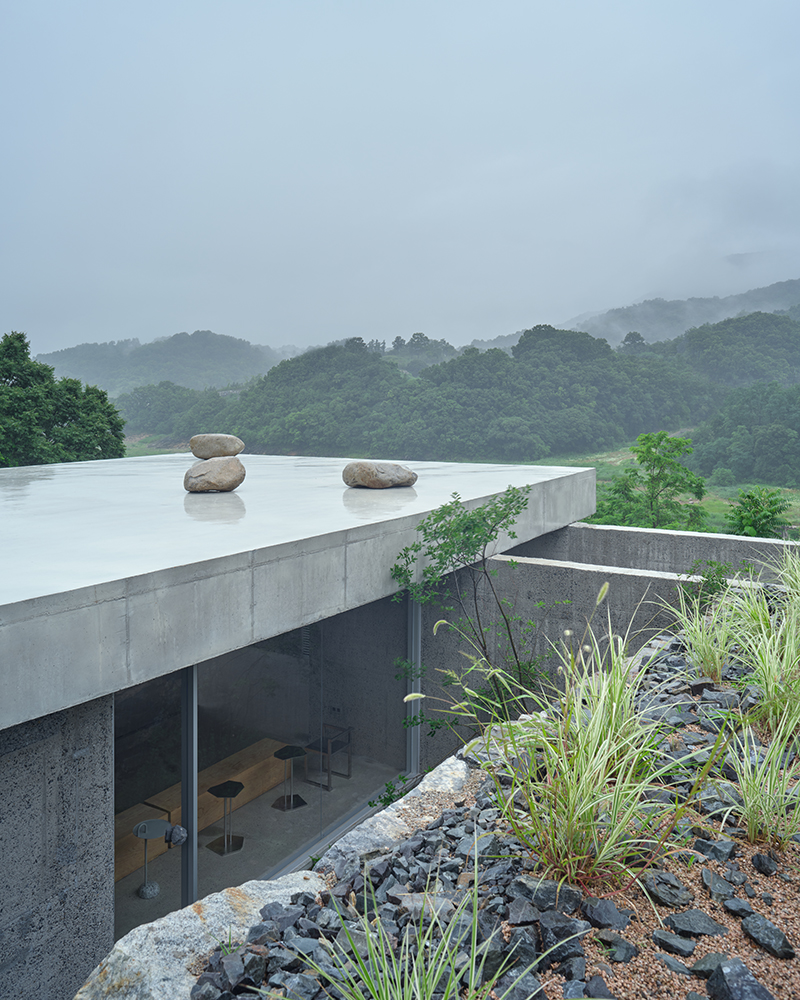
What relationship exists between the natural and the artificial? Where does the boundary between the two lie? The exposed sand and gravel in the cracks of concrete walls is no different to the exposed plane of rough stones. Is this natural or artificial? Grasses probe and gentle breezes blow through crevices in the concrete. When contemplating how nature and the artificial are related, the fundamentals of architecture are called into question.The site is located at a point where mountains and water meet, on the edge of Cheongpungho Lake, Jecheon. The origins of this place’s name, which translates as fresh wind and bright moon, alludes to a quaintness that characterises a site encircled by nature. Here, an open and loose sensory café was envisioned to replace the previous narrative with an experience of the place. This began with the wall and roof—the basic elements of architecture. The wall divides the yard and connects the different layers in this space as it crosses the sloped site. A horizontal plate was positioned on top to form a boundary between the outside and the inside. The wall and roof create a layered impression and presents gaps in the three-dimensional topography, allowing air and light to pass through.
An experience of this place is made up of spatial sequences generated by the intersection of nature and the artificial. The visitor’s passage begins by going underground. When descending the stairs created by widening the entrance to the site, the wall that shapes the sinking flow of this form also invites the forest at the front of the building into the interior. The yard of light, where light permeates the gap in the ceiling, appears beyond the counter. When one approaches this again on the upper level, the concrete stone columns and the untidy yard of stone form a counterpoint to each other, defining the relationship between nature and the artificial. The dematerialised surface of the water space, created at the front of the dining building, undulates and forces light to bounce off the rough concrete wall surface. Interrelationships between stone and concrete, wall and plate, and nature and the artificial all coexist on this site. To capture as sense of the connection between the two different subjects, one must first examine the boundary between them. (written by Na Unchung, Yoo Sorae / edited by Bang Yukyung)
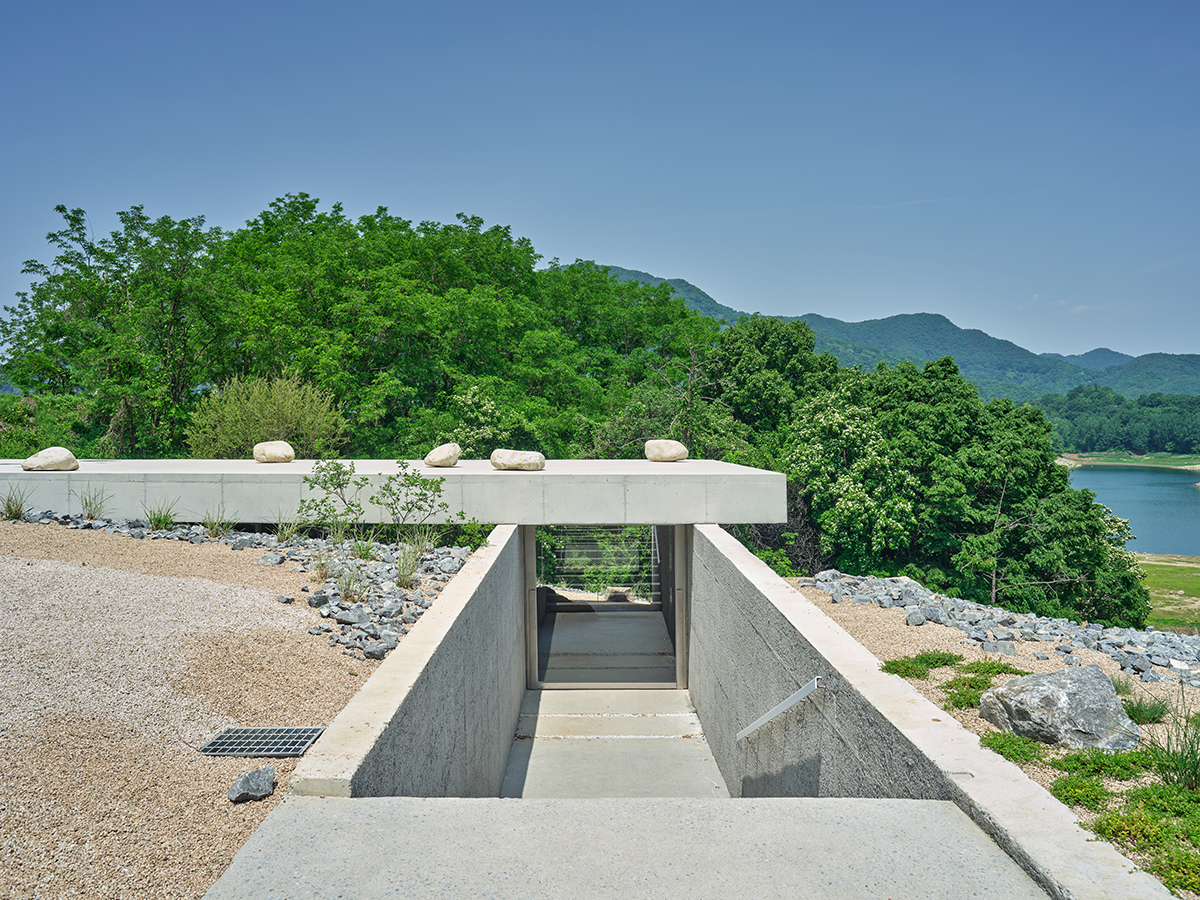
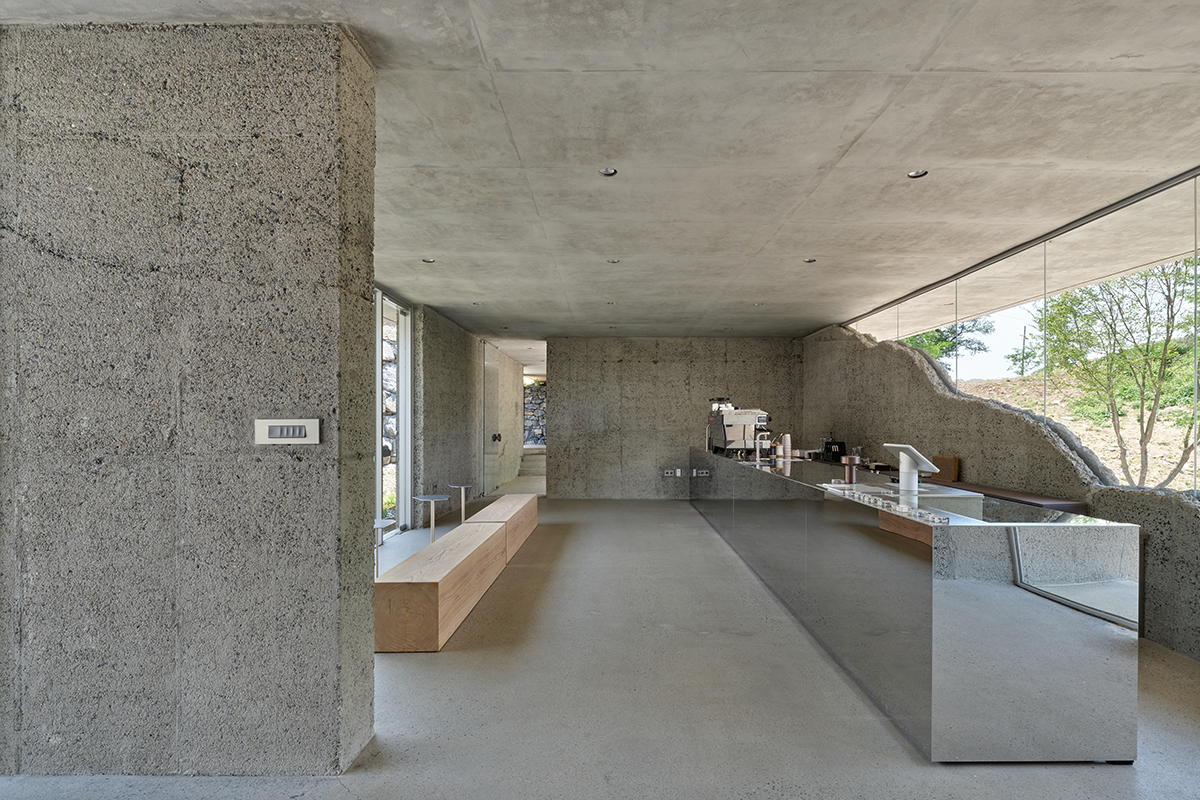
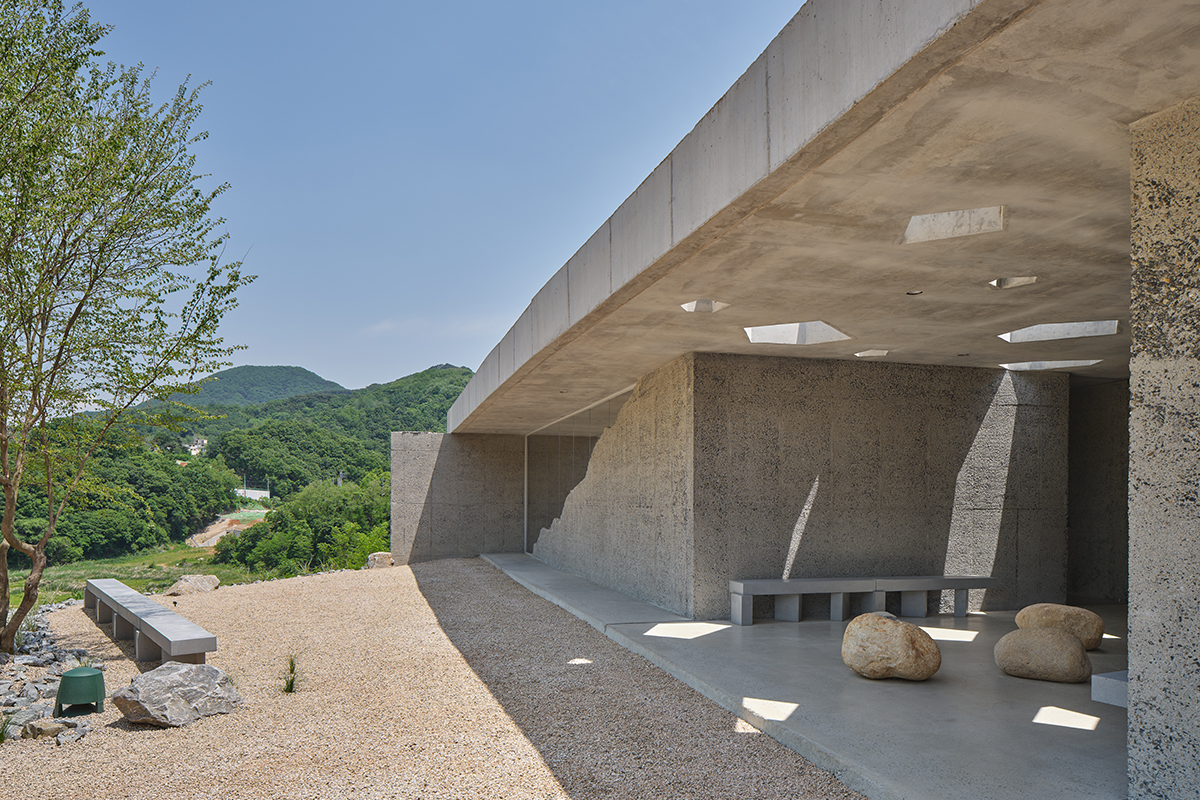
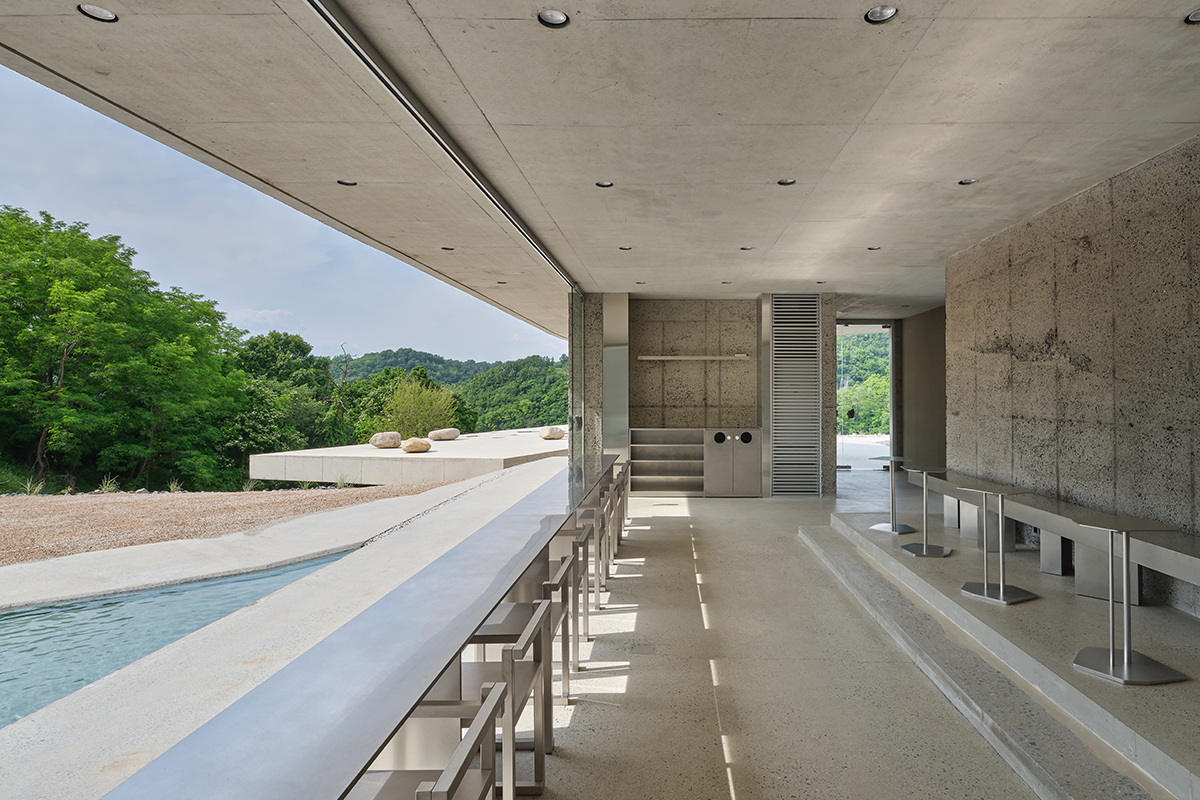
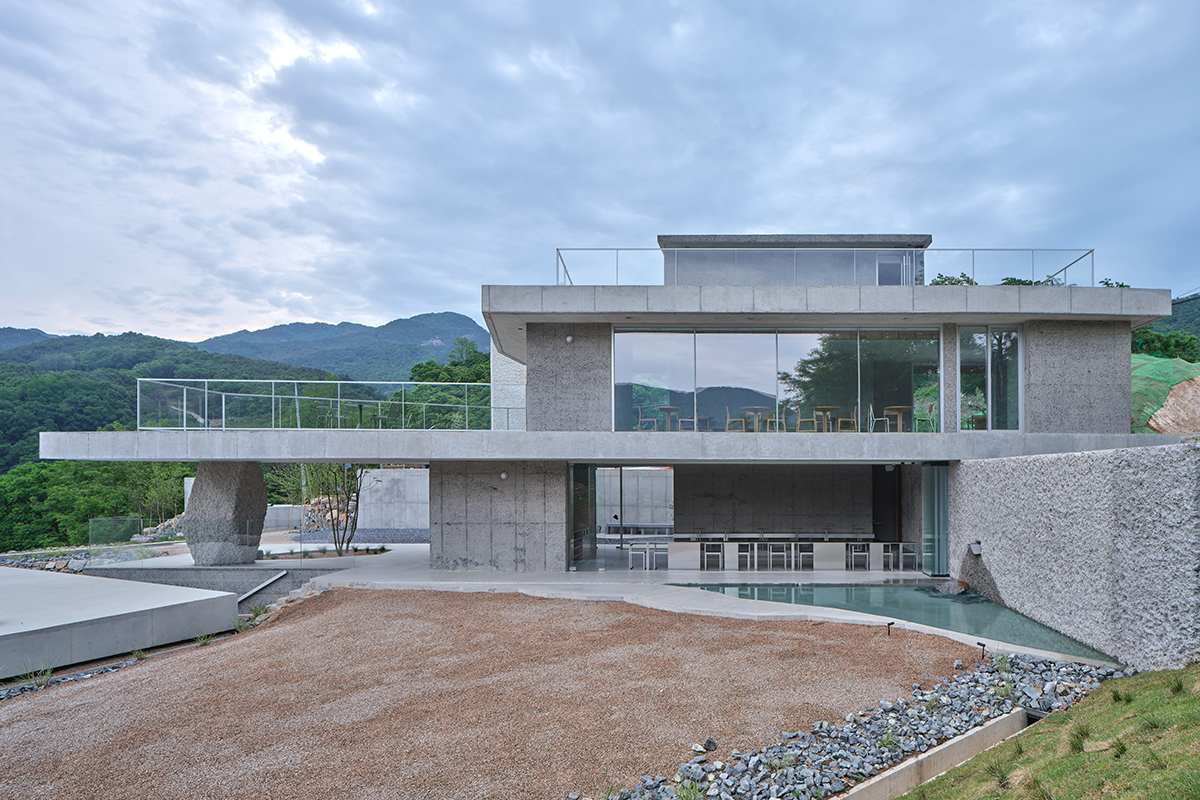
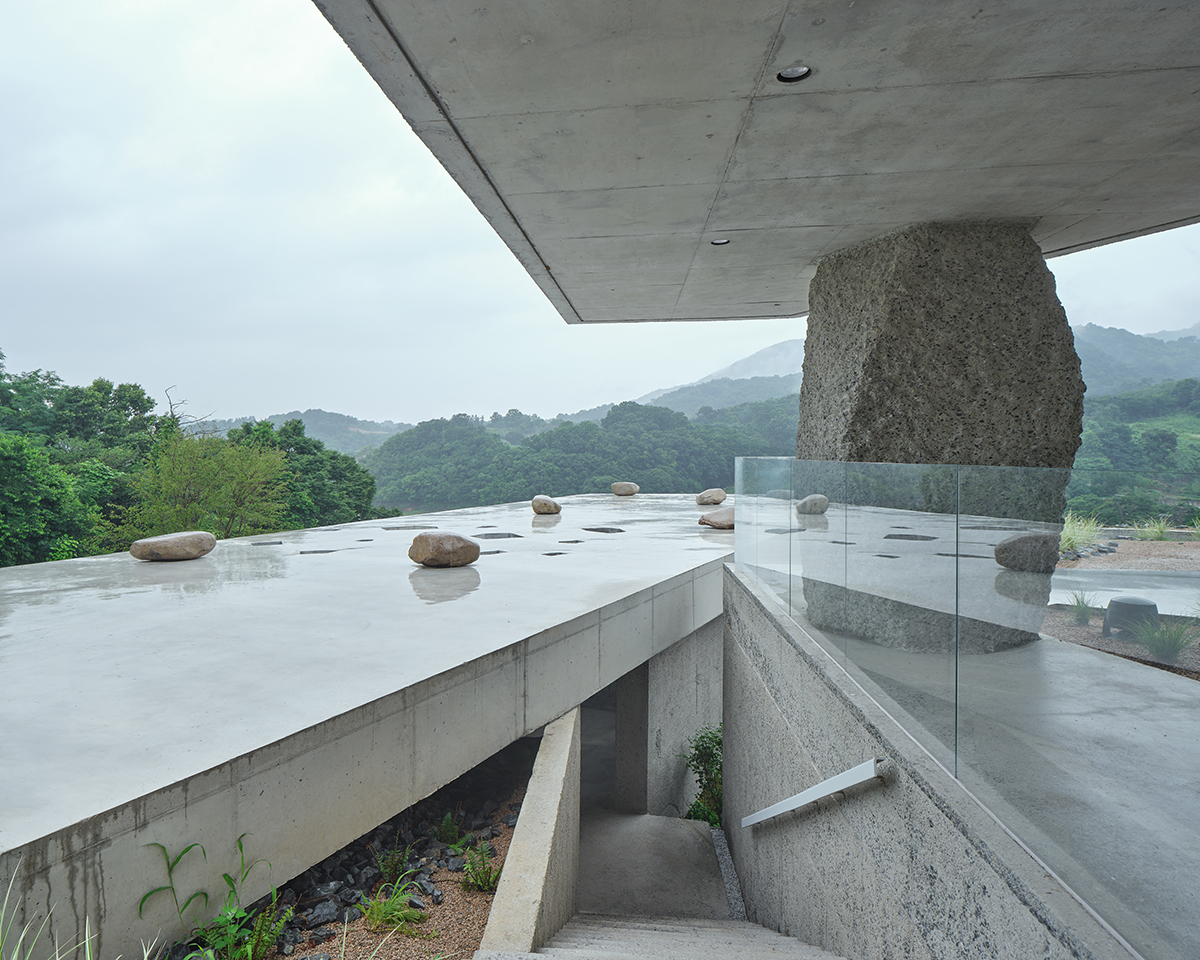
You can see more information on the SPACE No. 670 (September 2023).

NAMELESS Architecture (Na Unchung, Yoo Sorae)
Lee Changsoo, Lee Jungho, Gang Taekgyu, Park Jiho
1566, Cheongpungho-ro, Geumseong-myeon, Jecheon-s
neighbourhood living facility (café)
2,843㎡
262.15m㎡
290.46㎡
B1, 2F
19
6.4m
9.22%
10.22%
RC
exposed concrete chipping, hammered concrete, gla
exposed concrete chipping, polished concrete
Eden Structural Engineering Group
SUN ENG
TAEYOUN D&F
June – Dec. 2021
Apr. 2022 – Apr. 2023
CONCRETEWALL
Studio L






